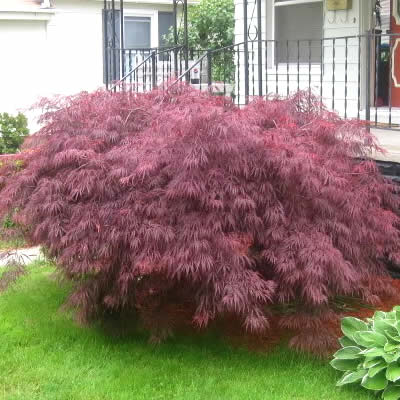
That’s what all plants, especially Japanese maples need.īut not all of us have good soil in our yards so what do we do. For years and years vegetation falls to the earth and rots and becomes topsoil. Really good topsoil is just that, organic matter. What a Japanese maple really needs is good rich soil that contains a significant amount of organic matter. What Should I Use to Fertilize My Japanese Maple? Most ornamental plants physically cannot grow fast enough to use that much nitrogen and the overload of nitrogen will kill them almost immediately. Nitrogen drives top growth, vegetative growth, on plants. A bag of 14-14-14 garden fertilizer contains 14% Nitrogen, 14% Phosphorous and 14% potassium.Īnd as soon as you apply it and it gets wet, bam! All 14% of that nitrogen is released immediately. Your tree’s best chance is for you to cut some of the roots, then be sure it gets enough water.Garden fertilizers are designed to be immediate release. Girdled roots can cause leafless Japanese maples. Remember that these trees need water not just in summer, but in dry springs and falls as well.Īnother reason for leaves not growing on Japanese maples can be root related. Water stress can also be a reason for leaves not growing on Japanese maples. Remove it and plant only trees resistant to the fungus. Unfortunately, you cannot save a tree with verticillium. If you see a ring of dark on a cross section of the branch, it is likely this fungal disease. Prune out a branch to see if verticillium wilt is the cause of your Japanese maples not leafing out. If your tree has a problem getting the nutrients back up to the branches, the problem could be verticillium wilt, an infection in the xylem layer that blocks sap. In spring, the nutrients rise into the tree via sap. The nutrients that leaves produce during the summer are stored in the roots. If the buds do not seem to be processing at all, you’ll have to consider the worst possibility: verticillium wilt.
Crimson queen japanese maple tree pruning full#
If you see only leafless Japanese maple in your garden when other trees are in full leaf, check to see what the leaf buds look like. Reasons for Leaves Not Growing on Japanese Maples When trimming back, prune to a live bud or a branch union. Do a scratch test to look for green tissue. But be careful because some branches and shoots look dead but aren’t.

Your best course is to prune out dead or damaged branches. This can mean that your Japanese maple won’t leaf out. Colder than normal winter temperatures or bitterly cold winter winds can cause die back and winter burn.

If your winter was particularly brutal, that might explain your leafless Japanese maples. If, instead, you see no leaves on Japanese maples in spring or early summer, it is clear that something is amiss. If winter has come and gone, you look to your Japanese maples to start producing their beautiful leaves. When this happens to trees prized for their foliage, like Japanese maples, it can be especially heart wrenching. Trees not leafing out when they’re supposed to will almost certainly cause alarm in homeowners. Read on for more information about the possible reasons you see no leaves on Japanese maples in your garden. Leafless Japanese maple are stressed trees, and you’ll need to track down the cause. If your Japanese maple won’t leaf out, it’s very disappointing. Few trees are more charming than Japanese maples with their deeply cut, starry leaves.


 0 kommentar(er)
0 kommentar(er)
